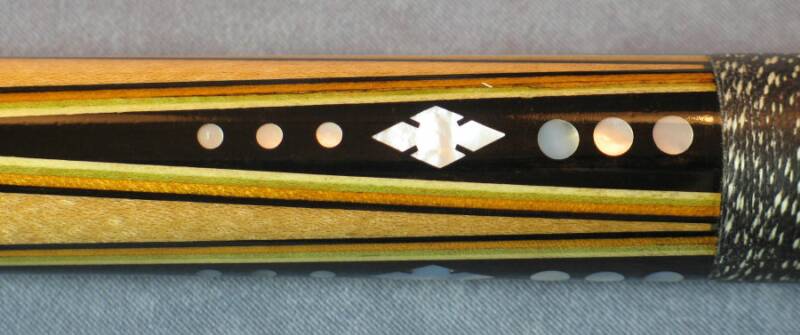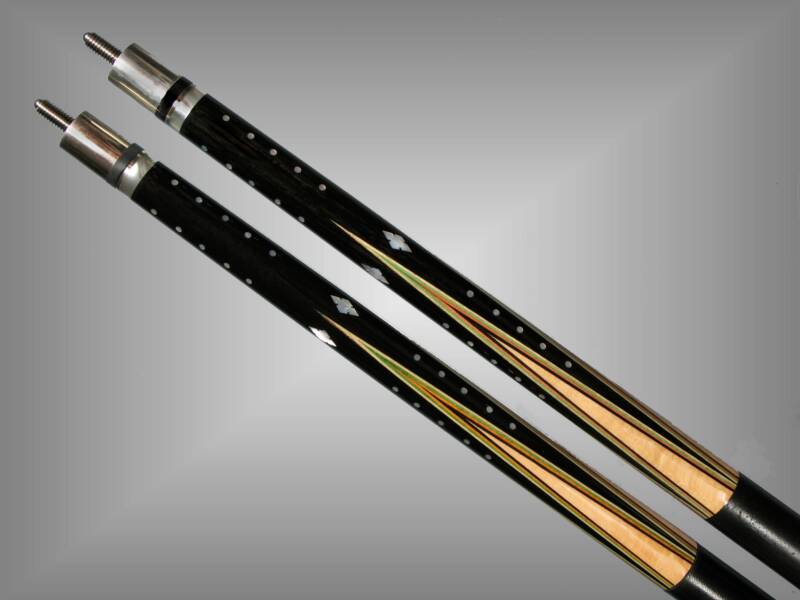#6 - Above,
The top cue was from the mid 1970's with Adam Japan or KPS full splices built to palmer specs. The second from the top was from the early 1980's, an Adam forearm which had longer points at the time. It is very difficult to distinguish between a Spain blank and this era of Adam blank.
The 3rd from the top is a Burton Spain forearm from the 1960's on a first catalog Model 5.
The bottom blank is a John Davis modern day full splice made similar to Burton Spain/John Davis forearms made in about 1970.
This comparison shows the difference in symmetry between the Spain/Davis points and the more stubby Adam/KPS forearms of the mid 1970's.





